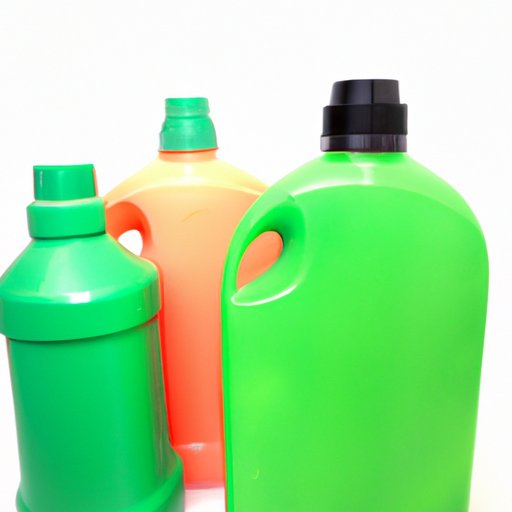
Introduction
Many households mix bleach and vinegar for cleaning purposes, not realizing that this combination can lead to dangerous chemical reactions. Such reactions can cause respiratory problems and skin irritation. In this article, we will explore what happens when you mix bleach and vinegar and why it is not recommended to mix these two common household cleaners.
What happens when you mix bleach and vinegar? A chemical reaction
When bleach and vinegar are mixed, they create a toxic chemical reaction, resulting in the release of chlorine gas. Chlorine gas is highly poisonous and can cause significant health problems, including respiratory damage and irritation of the throat. In this reaction, bleach (which contains sodium hypochlorite) oxidizes and reacts with acetic acid in vinegar, forming sodium acetate, water, and chlorine gas.
Why you should never mix bleach and vinegar
It is not recommended to mix bleach and vinegar because this combination can release a poisonous gas. If inhaled, chlorine gas can cause severe respiratory damage and irritation, leading to wheezing, coughing, and shortness of breath. Inhaling this gas can also cause a burning sensation in the eyes, nose, and throat, leading to watery eyes and skin irritation. Additionally, mixing bleach and vinegar can be dangerous near other chemicals or surfaces.
The dangers of mixing bleach and vinegar
Mixing bleach and vinegar can be hazardous to human health. Inhaling or ingesting chlorine gas can cause respiratory damage and irritation, leading to wheezing, coughing, and shortness of breath. Ingesting or swallowing this toxic gas can also cause gastrointestinal problems like vomiting, nausea, and irritation of the mouth and throat. Furthermore, the mixture can be hazardous to other chemicals or surfaces. It can cause the release of toxic fumes, leading to a fire or explosion.

Understanding the science behind mixing bleach and vinegar
Bleach and vinegar have opposite chemical properties. Bleach is highly basic, while vinegar is acidic. When bleach and vinegar are mixed, the highly basic bleach reacts with acidic vinegar, forming toxic chlorine gas. The heat generated by the reaction further accelerates the evaporation of the toxic gas, making the fumes even more dangerous.
The harmful effects of bleach and vinegar mixture
Inhaling or ingesting chlorine gas, which is formed when bleach and vinegar are mixed, can cause respiratory problems, including shortness of breath, wheezing, coughing, and irritation of the throat. Swallowing chlorine gas can also lead to gastrointestinal problems like vomiting, nausea, and irritation of the mouth and throat. Skin contact with chlorine gas or bleach and vinegar mixture can cause significant irritation and itching to the skin.
The risks of using bleach and vinegar together
The potential risks of using bleach and vinegar together are significant. For instance, the mixture can cause toxic fumes leading to a burning sensation in the eyes, nose, and throat and skin irritation. It is essential to avoid creating the mixture accidentally, as the fumes can be dangerous when inhaled. To avoid mixing bleach and vinegar, it is recommended that you do not store them close or mix them for cleaning purposes.
Alternatives to using bleach and vinegar for household cleaning
Several non-toxic alternatives can be used for household cleaning purposes. Examples include baking soda, lemon juice, hydrogen peroxide, and vinegar used separately. Baking soda, for instance, can be mixed with vinegar or lemon juice to create a natural cleaning solution that is safe to use. Hydrogen peroxide is also an excellent alternative that can kill bacteria, mold, and viruses without releasing toxic fumes. Natural and organic cleaning products are also highly recommended for household cleaning purposes.
Conclusion
Bleach and vinegar are common household cleaners that should not be mixed. The chemical reaction between bleach and vinegar can create toxic chlorine gas, which can cause severe respiratory problems and skin irritation. It is essential to understand the potential hazards of combining chemicals and to take necessary precautions while handling dangerous materials. By using non-toxic alternatives, you can keep your home clean without exposing yourself to toxins.




